Potrebujeme váš súhlas na využitie jednotlivých dát, aby sa vám okrem iného mohli ukazovať informácie týkajúce sa vašich záujmov. Súhlas udelíte kliknutím na tlačidlo „OK“.
ASTM F1608-00(2009)
Standard Test Method for Microbial Ranking of Porous Packaging Materials (Exposure Chamber Method)
Automaticky preložený názov:
Štandardná skúšobná metóda pre mikrobiálne rebríčku poréznych obalových materiálov (expozícia komora Method)
NORMA vydaná dňa 1.10.2009
Informácie o norme:
Označenie normy: ASTM F1608-00(2009)
Poznámka: NEPLATNÁ
Dátum vydania normy: 1.10.2009
Kód tovaru: NS-50910
Počet strán: 9
Približná hmotnosť: 27 g (0.06 libier)
Krajina: Americká technická norma
Kategória: Technické normy ASTM
Kategórie - podobné normy:
Anotácia textu normy ASTM F1608-00(2009) :
Keywords:
biological barrier, medical packaging, microbial barrier, microbial-challenge, porous packaging, sterile barrier, sterile packaging, Airborne microorganisms, Bacteria/bacterial control, Biological data analysis, Exposure chamber method, Log reduction value (LRV), Loss of sterility, Medical/surgical packaging materials, Microbial environments, Microorganisms, Porous packaging materials, Quantitative analysis/measurement, Spore detection, Sterile medical device packages, Sterility
Doplňujúce informácie
| Significance and Use | ||
|
The exposure-chamber method is a quantitative procedure for determining the microbial-barrier properties of porous materials under the conditions specified by the test. Data obtained from this test are useful in assessing the relative potential of a particular porous material to contribute to the loss of sterility to the contents of the package versus another porous material. This test method is not intended to predict the performance of a given material in a specific sterile-packaging application. The maintenance of sterility in a particular packaging application will depend on a number of factors, including, but not limited to the following: The bacterial challenge (number and kinds of microorganisms) that the package will encounter in its distribution and use. This may be influenced by factors such as shipping methods, expected shelf life, geographic location, and storage conditions. The package design, including factors such as adhesion between materials, the presence or absence of secondary and tertiary packaging, and the nature of the device within the package. The rate and volume exchange of air that the porous package encounters during its distribution and shelf life. This can be influenced by factors including the free-air volume within the package and pressure changes occurring as a result of transportation, manipulation, weather, or mechanical influences (such as room door closures and HVAC systems). The microstructure of a porous material which influences the relative ability to adsorb or entrap microorganisms, or both, under different air-flow conditions. |
||
| 1. Scope | ||
|
1.1 This test method is used to determine the passage of airborne bacteria through porous materials intended for use in packaging sterile medical devices. This test method is designed to test materials under conditions that result in the detectable passage of bacterial spores through the test material. 1.1.1 A round-robin study was conducted with eleven laboratories participating. Each laboratory tested duplicate samples of six commercially available porous materials to determine the LRV. Materials tested under the standard conditions described in this test method returned average values that range from LRV 1.7 to 4.3. 1.1.2 Results of this round-robin study indicate that caution should be used when comparing test data and ranking materials, especially when a small number of sample replicates are used. In addition, further collaborative work (such as described in Practice E691) should be conducted before this test method would be condsidered adequate for purposes of setting performance standards. 1.2 This test method requires manipulation of microorganisms and should be performed only by trained personnel. The U.S. Department of Health and Human Services publication Biosafety in Microbiological and Biomedical Laboratories (CDC/NIH-HHS Publication No. 84-8395) should be consulted for guidance. 1.3 The values stated in SI units are to be regarded as standard. No other units of measurement are included in this standard. 1.4 This standard does not purport to address all of the safety concerns, if any, associated with its use. It is the responsibility of the user of this standard to establish appropriate safety and health practices and determine the applicability of regulatory limitations prior to use. |
||
| 2. Referenced Documents | ||
|
Podobné normy:
Historická
1.10.2013
Historická
1.4.2012
Historická
1.3.2010
Historická
1.4.2012
Historická
1.1.2011
Historická
1.10.2010
Odporúčame:
Aktualizácia technických noriem
Chcete mať istotu, že používate len platné technické normy?
Ponúkame Vám riešenie, ktoré Vám zaistí mesačný prehľad o aktuálnosti noriem, ktoré používate.
Chcete vedieť viac informácií ? Pozrite sa na túto stránku.


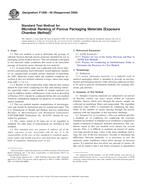
 ASTM E2149-13a
ASTM E2149-13a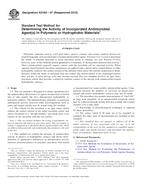 ASTM E2180-07(2012)..
ASTM E2180-07(2012)..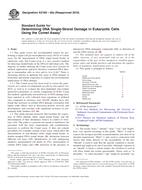 ASTM E2186-02a(2010)..
ASTM E2186-02a(2010)..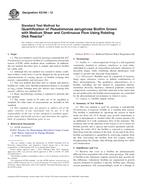 ASTM E2196-12
ASTM E2196-12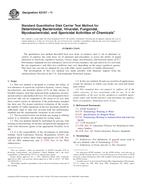 ASTM E2197-11
ASTM E2197-11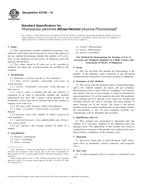 ASTM E2198-10
ASTM E2198-10
 Cookies
Cookies
